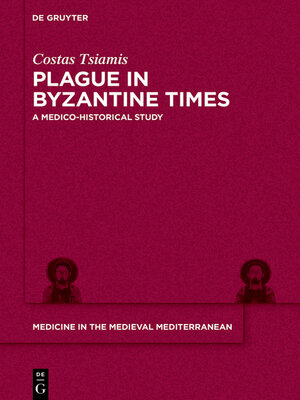Plague in Byzantine Times
ebook ∣ A Medico-historical Study · Medicine in the Medieval Mediterranean
By Costas Tsiamis

Sign up to save your library
With an OverDrive account, you can save your favorite libraries for at-a-glance information about availability. Find out more about OverDrive accounts.
Find this title in Libby, the library reading app by OverDrive.



Search for a digital library with this title
Title found at these libraries:
| Loading... |
The lack of reliable demographic data for Byzantine cities raises questions as to the actual rate of expansion and mortality of plague. This essentially leads to the question of change and progress of the nature of infectious diseases in that period. Also, the analysis of the written sources raised a series of questions, mainly epidemiological in nature: the entry points and spreading of the disease in the Mediterranean, the epidemic dynamics as well as the evolution of the microbial agent of plague, i.e. Yersinia pestis.
The present study offers a substantial explanation for the outbreaks of plague that struck Byzantium by exploring the multiple factors that caused or triggered epidemics. The study covers the entire period extending from the beginning of the Byzantine Empire until its fall in 1453, which was marked by two major pandemics, namely the Plague of Justinian and the Black Death. All known primary sources were collected and grouped from a spatiotemporal perspective, so as to retrace the unfolding of the two pandemics. The focus of the research shifts from known historical frameworks to ones of human activities, endemic foci and natural environment of the era as risk factors of the outbreaks.






